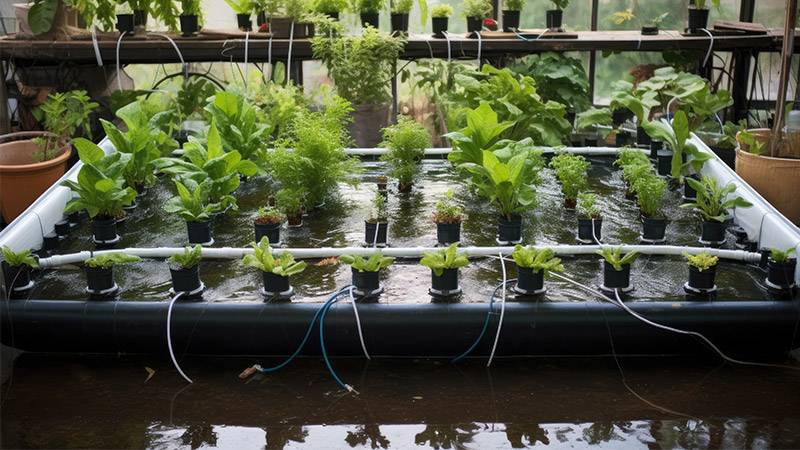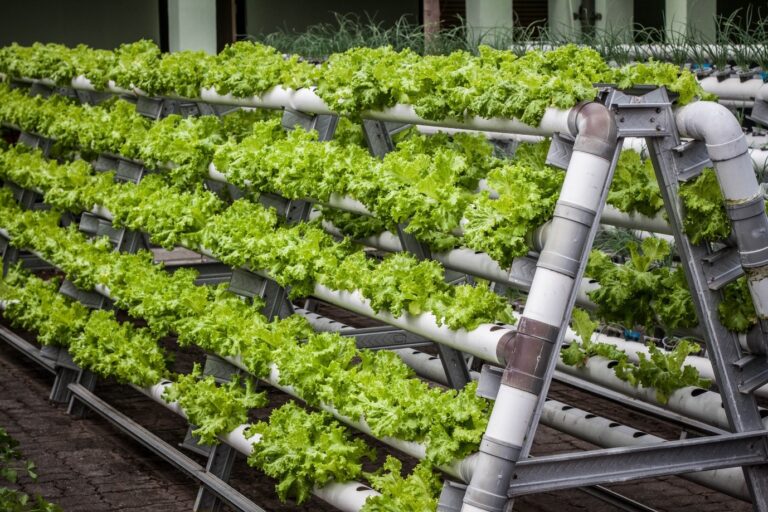Profit per square foot in a greenhouse (Profit/Sq. Ft.) is determined by subtracting total costs (Total Cost) from total revenue ( Total Revenue) and then dividing the resulting value by the total square footage of the greenhouse ( Total Sq. Ft.):
Profit/Sq. Ft. = (Total Revenue−Total Cost)/Total Sq. Ft.
Factors influencing this figure include crop selection, yield efficiency, operating expenses, and market demand. Maximizing productivity, reducing costs, setting competitive prices, and understanding market dynamics are critical to enhancing profit margins.
How do Crops and Efficiency Impact Greenhouse Profits?
Crops and efficiency play crucial roles in determining the profitability of a greenhouse operation. Here’s how they impact greenhouse profits:
Crop Selection
The choice of crops significantly affects greenhouse profits. Some crops have higher market demand, better pricing, or lower production costs, leading to higher profitability.
Factors like climate suitability, market trends, and consumer preferences also influence crop selection. High-value crops or those in high demand can lead to increased profits.
Efficiency in Resource Utilization

Efficient use of resources such as water, fertilizers, pesticides, and energy is vital. Optimal resource management reduces input costs and wastage, directly impacting profitability.
Employing technologies like drip irrigation, LED lighting, and automated systems for climate control and monitoring helps in resource efficiency.
Yield and Production Rates
Maximizing yield per square foot or acre is crucial. Increasing production rates without compromising quality can positively impact profits.
Techniques like crop rotation, proper plant nutrition, and optimized growing conditions contribute to higher yields.
Labor Efficiency
Labor costs form a significant portion of greenhouse expenses. Implementing efficient labor practices, such as automated processes for planting, harvesting, and maintenance, reduces labor costs and increases overall efficiency.
Market Demand and Pricing
Fluctuations in market demand and pricing significantly affect profits. Timely harvesting, aligning crop production with market demand, and diversifying the crop portfolio based on market trends can mitigate risks and enhance profits.
Quality Control and Consistency
Consistent quality and meeting market standards are essential. Maintaining a reputation for high-quality produce can lead to customer loyalty and better pricing, positively impacting profits.
Sustainability and Environmental Practices
Adopting sustainable practices not only reduces environmental impact but also attracts environmentally conscious consumers. This can result in premium pricing for sustainably produced crops and reduce long-term costs associated with environmental degradation.
Cost Management
Efficient cost management across all aspects of greenhouse operations, including maintenance, utilities, transportation, and packaging, is crucial. Monitoring and reducing unnecessary expenses contribute to higher profitability.
The profitability of a greenhouse operation is influenced by various factors related to crop selection, efficient resource utilization, production rates, market demand, quality control, sustainability practices, cost management, and labor efficiency. Balancing these factors effectively is essential for maximizing profits in greenhouse farming.
What’s the Formula for Greenhouse Profit per Sq. Ft.?
The formula for calculating greenhouse profit per square foot involves considering both revenue and costs associated with the cultivation of crops in the greenhouse. Here’s a basic formula:
Greenhouse Profit per Sq. Ft.= (Total Area/Total Revenue) − (Total Area/Total Cost)
To break it down further
Total Revenue: This includes the total income generated from selling the crops grown in the greenhouse within a specified period.
Total Cost: This involves all expenses incurred in greenhouse operations, including but not limited to:
- Cost of seeds or seedlings
- Labor costs
- Energy costs (heating, lighting, etc.)
- Water and irrigation expenses
- Fertilizers and pesticides
- Equipment and maintenance costs
- Overhead expenses (rent, insurance, administrative costs, etc.)
Total Area: This refers to the total usable area for crop cultivation within the greenhouse. It’s usually measured in square feet or square meters.
The formula provides a simple way to calculate the profit generated per square foot of greenhouse space by subtracting the total cost per square foot from the total revenue per square foot.
How to Maximize Greenhouse Profits Strategically?

To maximize profits in your greenhouse, start by choosing crops that are in high demand and suit your local climate. Try growing a variety of crops to spread out risks and capture different market opportunities. Make the most of your resources by using water, energy, fertilizers, and labor efficiently. Use technology like smart irrigation and automation to cut down on waste and increase productivity.
Focus on getting higher yields per square foot by using the best farming practices and keeping an eye on crop health. Stay updated with market demands and time your production accordingly to avoid surplus and ensure better prices. Keep the quality of your produce consistent to build trust with customers and secure better pricing in the long run. Consider sustainable farming methods to reduce your environmental impact and potentially attract more customers.
Always keep an eye on your costs and look for ways to save without compromising quality. Train your staff well and invest in their skills to boost productivity. Plan for risks and be ready with backup plans in case of crop failures or market changes. Continuously evaluate and improve your strategies by staying updated with industry trends and being open to innovations that can enhance profitability.
FAQ’s
How much do greenhouses produce?
Greenhouse production varies widely based on factors like crop type, climate, technology used, and management practices. On average, they can significantly increase yields compared to open-field farming due to controlled conditions.
Are greenhouses worth the money?
Yes, greenhouses can be worth the investment. They offer controlled environments, allowing extended growing seasons, higher-quality produce, and better protection against pests and adverse weather, potentially resulting in increased profits.
Do greenhouses save money?
Greenhouses can save money in the long run by optimizing resource use, reducing water consumption, offering better control over inputs, minimizing crop loss due to weather or pests, and providing the potential for year-round production.
What is the size of a greenhouse?
Greenhouses vary in size, ranging from small backyard structures to large commercial operations covering acres. The size depends on the intended use, available space, and the scale of cultivation desired.
Do greenhouses increase yield?
Yes, greenhouses can significantly increase crop yields by providing controlled environments with regulated temperature, humidity, and light, creating optimal conditions for plant growth throughout the year.
Do greenhouses work in hot climates?
Yes, greenhouses can work in hot climates with proper design and management. Techniques like proper ventilation, shading, cooling systems, and selecting heat-tolerant crops can help regulate temperatures inside the greenhouse.
Final Words
In conclusion, understanding greenhouse profitability relies on various factors like the crops you grow, managing costs, and meeting market demands. Keeping an eye on what you spend and what you earn is essential. To make more money, consider choosing crops wisely, using resources efficiently, adjusting prices based on market trends, and embracing advanced methods.
Continuous monitoring and adapting to changes will help in making the most profit. Overall, maximizing profits in a greenhouse involves smart choices and staying flexible to market shifts for long-term success.

